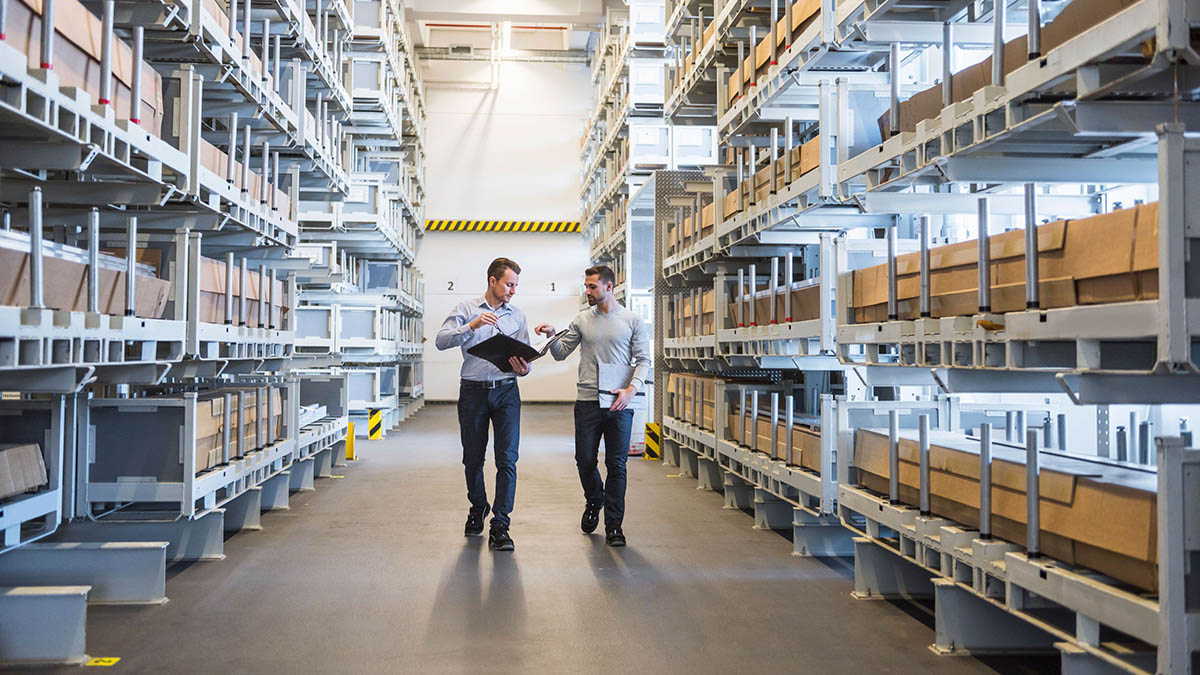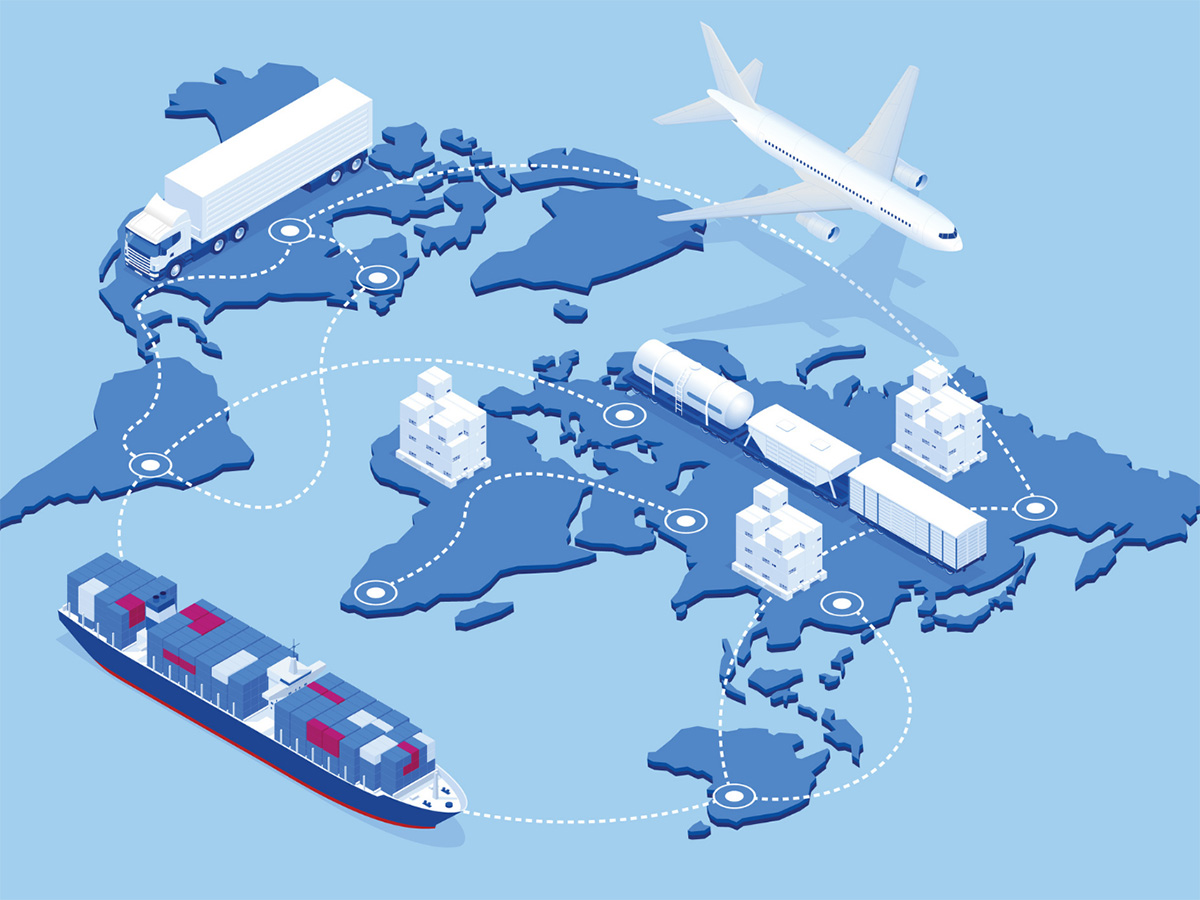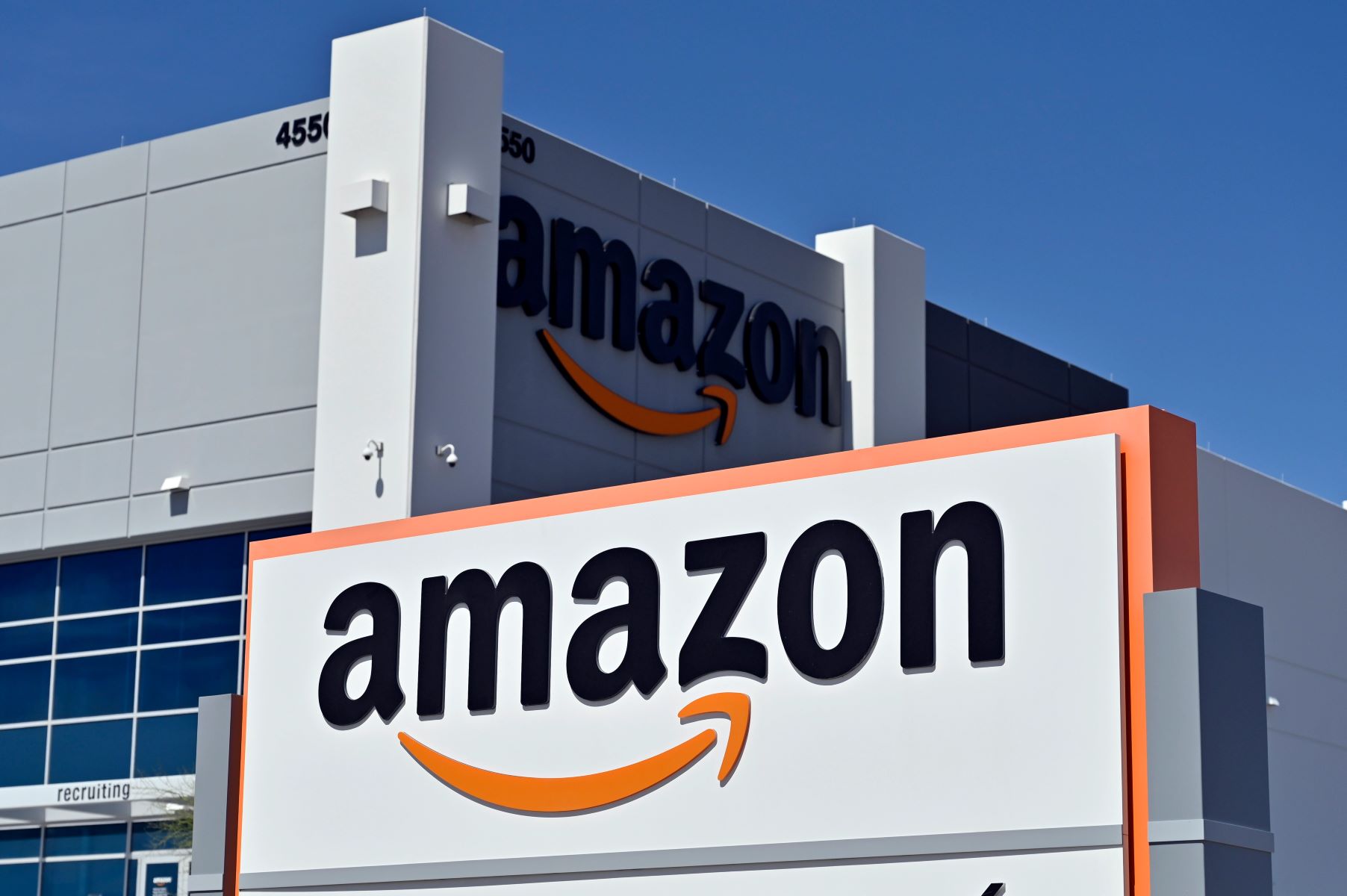

Finance
What Is Visible Supply Chain T1?
Published: October 19, 2023
Learn how Visible Supply Chain T1 is revolutionizing finance with its innovative solutions, streamlining operations and optimizing supply chain management to boost profitability.
(Many of the links in this article redirect to a specific reviewed product. Your purchase of these products through affiliate links helps to generate commission for LiveWell, at no extra cost. Learn more)
Table of Contents
- Introduction
- Definition of Visible Supply Chain T1
- Why is Visible Supply Chain T1 Important?
- Benefits of Implementing Visible Supply Chain T1
- Challenges in Implementing Visible Supply Chain T1
- Best Practices for Implementing Visible Supply Chain T1
- Case Studies of Successful Visible Supply Chain T1 Implementations
- Conclusion
Introduction
Welcome to the world of supply chain management, where efficiency and visibility are the keys to success. In today’s rapidly evolving business landscape, companies are constantly looking for innovative ways to streamline their operations, reduce costs, and enhance customer satisfaction. One crucial aspect of supply chain management is the ability to have real-time visibility into the movement of goods and materials throughout the entire supply chain, from sourcing to delivery.
Visible Supply Chain T1, or T1 for short, is a term that has gained traction in recent years. It refers to the concept of having complete visibility into the first tier of the supply chain, which is the tier that directly interacts with the end customer. T1 visibility allows companies to track and monitor the status of orders, shipments, and inventory in real-time, enabling them to make informed decisions and respond swiftly to any issues or delays.
Traditionally, supply chain visibility was limited to the internal operations of a company and the immediate suppliers and customers. However, in today’s interconnected global economy, businesses are facing increased complexities and uncertainties. They need to go beyond the first tier to gain a comprehensive view of the entire supply chain, including the second, third, and even fourth tiers.
This article will delve into the concept of Visible Supply Chain T1, its importance in today’s business environment, and the benefits and challenges of implementing it. We will also explore best practices and provide real-life case studies to illustrate successful implementations. By the end of this article, you will have a clear understanding of how Visible Supply Chain T1 can revolutionize your supply chain operations and give your business a competitive edge.
Definition of Visible Supply Chain T1
Visible Supply Chain T1 refers to the concept of having real-time visibility into the first tier of the supply chain, which consists of the suppliers, manufacturers, distributors, and other entities that directly interact with the end customer. It is about tracing and monitoring the flow of goods, materials, and information across this initial tier of the supply chain.
With Visible Supply Chain T1, companies gain the ability to track and monitor the status of orders, shipments, and inventory at every stage, from the procurement of raw materials to the final delivery of the finished product. This level of visibility provides insights into the entire supply chain, including the production processes, transportation routes, and storage facilities involved.
The implementation of Visible Supply Chain T1 typically involves the use of advanced technologies, such as internet of things (IoT) devices, sensors, cloud computing, and data analytics. These technologies enable the collection, analysis, and sharing of real-time data, allowing companies to have a holistic view of their supply chain activities.
By having visibility into the first tier of the supply chain, companies can effectively manage inventory levels, optimize transportation routes, minimize lead times, and proactively address any disruptions or delays. It facilitates better coordination and collaboration among all stakeholders in the supply chain, promoting efficiency, transparency, and customer satisfaction.
Furthermore, Visible Supply Chain T1 goes beyond just tracking physical goods. It also encompasses the visibility of information, such as purchase orders, invoices, and customer feedback. This comprehensive visibility empowers companies to make data-driven decisions, improve operational efficiency, and enhance customer service.
In summary, Visible Supply Chain T1 is about having real-time visibility into the first tier of the supply chain, enabling companies to track and monitor the flow of goods, materials, and information from suppliers to end customers. It leverages advanced technologies to collect and analyze data, facilitating better decision-making and driving operational excellence.
Why is Visible Supply Chain T1 Important?
Visible Supply Chain T1 is vitally important for companies in today’s fast-paced and interconnected business landscape. Here are some key reasons why:
- Enhanced Customer Satisfaction: With Visible Supply Chain T1, companies can provide their customers with accurate and real-time information about the status of their orders. This transparency builds trust and confidence, leading to improved customer satisfaction and loyalty.
- Improved Supply Chain Efficiency: By having visibility into the first tier of the supply chain, companies can identify bottlenecks, streamline processes, and improve overall efficiency. They can proactively address any disruptions or delays, ensuring smooth operations and timely delivery of goods.
- Better Inventory Management: Visible Supply Chain T1 allows companies to track and monitor inventory levels in real-time. This enables them to optimize inventory holding costs, avoid stockouts or overstocks, and make informed decisions regarding procurement and production.
- Reduced Costs: The visibility provided by Visible Supply Chain T1 enables companies to identify cost-saving opportunities. By analyzing data on transportation routes, inventory levels, and production processes, they can optimize operations and reduce unnecessary expenses.
- Effective Collaboration: With Visible Supply Chain T1, all stakeholders in the supply chain, including suppliers, manufacturers, distributors, and customers, can access and share real-time information. This promotes collaboration, communication, and coordination, fostering strong relationships and driving mutual success.
- Risk Mitigation: Visible Supply Chain T1 enables companies to proactively identify and mitigate risks. By closely monitoring the supply chain, they can anticipate potential disruptions, such as supplier issues or transportation delays, and take corrective actions to minimize their impact.
Overall, Visible Supply Chain T1 plays a crucial role in enhancing customer satisfaction, improving operational efficiency, reducing costs, promoting collaboration, and mitigating risks. It empowers companies to make data-driven decisions, optimize their supply chain processes, and stay competitive in today’s dynamic business environment.
Benefits of Implementing Visible Supply Chain T1
Implementing Visible Supply Chain T1 can bring a wide range of benefits to companies. Here are some key advantages:
- Real-Time Visibility: One of the major benefits of implementing Visible Supply Chain T1 is real-time visibility into the movement of goods, orders, and inventory. This allows companies to monitor and track the progress of their supply chain operations, helping them make informed decisions and respond quickly to any issues or delays.
- Improved Decision-Making: With accurate and up-to-date information about their supply chain processes, companies can make better decisions regarding inventory management, production planning, and resource allocation. They can identify opportunities for optimization and implement strategies to increase efficiency and reduce costs.
- Enhanced Customer Service: Visible Supply Chain T1 enables companies to provide their customers with accurate and timely information regarding the status of their orders. This transparency builds trust and confidence, leading to improved customer satisfaction and loyalty.
- Efficient Inventory Management: By having visibility into the first tier of the supply chain, companies can effectively manage their inventory levels. They can track stock levels, monitor demand trends, and optimize replenishment processes, leading to reduced holding costs, minimized stockouts or overstocks, and improved cash flow.
- Optimized Transportation: With visibility into the first tier of the supply chain, companies can analyze transportation routes, monitor delivery schedules, and optimize logistics operations. This leads to improved on-time delivery, reduced transportation costs, and increased customer satisfaction.
- Supply Chain Risk Management: Visible Supply Chain T1 allows companies to identify and mitigate risks in their supply chain. They can proactively address disruptions, such as supplier issues or production delays, and implement contingency plans to minimize their impact. This enhances business resilience and continuity.
- Improved Collaboration: Visible Supply Chain T1 promotes collaboration and communication among all stakeholders in the supply chain. Suppliers, manufacturers, distributors, and customers can access and share real-time information, enabling seamless coordination and better decision-making.
By implementing Visible Supply Chain T1, companies can achieve improved operational efficiency, reduced costs, enhanced customer satisfaction, and better risk management. They can gain a competitive advantage in the market by leveraging real-time data and insights to optimize their supply chain processes and deliver superior products and services.
Challenges in Implementing Visible Supply Chain T1
While the benefits of implementing Visible Supply Chain T1 are substantial, it is important to recognize that there are challenges associated with its implementation. Here are some key challenges companies may face:
- Data Integration: Integrating disparate systems and data sources across the supply chain can be complex. Companies may need to overcome technical hurdles to ensure seamless data connectivity and integration from suppliers to end customers.
- Technology Adoption: Implementing Visible Supply Chain T1 often requires the adoption of advanced technologies such as IoT devices, sensors, and data analytics tools. Companies may face challenges in identifying and implementing the appropriate technology stack, as well as training employees to effectively use these new tools.
- Supplier Collaboration: Achieving visibility into the first tier of the supply chain relies heavily on collaboration with suppliers. However, not all suppliers may be equipped or willing to share real-time data. Companies may need to invest time and effort in building strong relationships and aligning their suppliers’ systems with their own.
- Data Security and Privacy: With increased visibility comes the need to protect sensitive supply chain data. Companies must ensure robust data security measures are in place to safeguard against cyber threats and unauthorized access to critical information.
- Change Management: Implementing Visible Supply Chain T1 requires significant organizational change. Companies may face resistance from employees who are accustomed to traditional supply chain practices. Effective change management strategies, including training and communication, are essential to overcome resistance and drive adoption.
- Cost Considerations: While the benefits of Visible Supply Chain T1 are substantial, there may be significant upfront costs involved in implementing the necessary technologies and systems. Companies need to carefully evaluate the return on investment and balance the potential benefits with the associated costs.
- Complexity and Scale: Depending on the size and complexity of the supply chain, implementing Visible Supply Chain T1 can be a challenging task. Companies must carefully plan and execute the implementation, taking into account the unique requirements and constraints of their specific supply chain network.
Despite these challenges, with proper planning, collaboration, and effective change management, companies can overcome the obstacles and successfully implement Visible Supply Chain T1. The benefits of improved visibility and enhanced supply chain operations make it a worthwhile endeavor for businesses looking to stay competitive in the rapidly evolving global marketplace.
Best Practices for Implementing Visible Supply Chain T1
Implementing Visible Supply Chain T1 requires careful planning, coordination, and effective execution. Here are some best practices to consider when implementing Visible Supply Chain T1:
- Define Clear Objectives: Clearly define the objectives and goals of implementing Visible Supply Chain T1. This will help focus efforts and facilitate decision-making throughout the implementation process.
- Collaborative Approach: Foster collaboration and communication among all stakeholders in the supply chain, including suppliers, manufacturers, distributors, and customers. Establish strong relationships and open lines of communication to ensure effective sharing of real-time data and insights.
- Invest in the Right Technology: Select the appropriate technology stack to support the implementation of Visible Supply Chain T1. Consider factors such as scalability, compatibility with existing systems, and ease of integration. Invest in reliable and secure technologies that can provide real-time visibility and analytics capabilities.
- Data Governance: Develop a robust data governance framework to ensure data accuracy, integrity, and security. Define clear data ownership, establish data standards, and implement measures to protect sensitive information.
- Engage Suppliers: Proactively engage with suppliers to gain their support and cooperation in sharing real-time data. Provide incentives and benefits for suppliers to participate in the visibility program, emphasizing the mutual benefits of improved collaboration and supply chain efficiency.
- Change Management: Support employees through the transition by providing comprehensive training on new systems and processes. Engage employees in the implementation process, addressing their concerns and emphasizing the benefits of Visible Supply Chain T1 for their roles and the overall organization.
- Continuous Improvement: Implement a process for continuous improvement and optimization. Regularly evaluate the performance and effectiveness of the Visible Supply Chain T1 implementation, making necessary adjustments and enhancements based on data insights and feedback from stakeholders.
- Measure and Monitor: Establish key performance indicators (KPIs) to measure the success of Visible Supply Chain T1 implementation. Monitor these metrics regularly to assess the impact on operational efficiency, customer satisfaction, and cost reductions.
By following these best practices, companies can ensure a successful implementation of Visible Supply Chain T1. It’s important to approach the implementation process strategically, involving all stakeholders, leveraging the right technology, and continuously focusing on improvement to maximize the benefits of increased visibility and optimized supply chain operations.
Case Studies of Successful Visible Supply Chain T1 Implementations
Implementing Visible Supply Chain T1 has proven to be beneficial for many companies across various industries. Here are a few case studies highlighting successful implementations:
Case Study 1: Company A – Retail Industry
Company A, a leading retailer, implemented Visible Supply Chain T1 to enhance their supply chain operations. By collaborating with their suppliers and integrating real-time data, they gained visibility into their supplier network, inventory levels, and transportation routes. This enabled them to optimize inventory management, reduce stockouts, and streamline their procurement processes. As a result, Company A experienced improved on-time delivery rates, increased customer satisfaction, and a decrease in logistics costs.
Case Study 2: Company B – Manufacturing Industry
Company B, a manufacturing company, implemented Visible Supply Chain T1 to improve their production planning and inventory management. By having real-time visibility into raw material availability, production schedules, and customer demand, they were able to optimize their manufacturing processes and reduce lead times. The improved visibility allowed them to identify and mitigate potential bottlenecks and optimize production capacity. Company B experienced increased operational efficiency, reduced costs, and improved customer satisfaction due to timely product delivery.
Case Study 3: Company C – Healthcare Industry
Company C, a healthcare provider, implemented Visible Supply Chain T1 to ensure the timely delivery of medical supplies and equipment. By integrating real-time data from their suppliers, transportation providers, and storage facilities, they gained visibility into the supply chain and could proactively address any disruptions or delays. This enabled them to maintain optimal inventory levels, improve response times, and provide uninterrupted patient care. Company C experienced improved patient satisfaction, reduced supply chain costs, and increased operational efficiency through the implementation of Visible Supply Chain T1.
These case studies demonstrate the significant benefits that Visible Supply Chain T1 can bring to companies across a range of industries. The enhanced visibility enables better decision-making, improved collaboration, and optimized supply chain operations, leading to increased customer satisfaction, reduced costs, and improved business performance.
Conclusion
Visible Supply Chain T1 has become a critical element in supply chain management, enabling companies to gain real-time visibility into the first tier of their supply chain. It allows for the tracking and monitoring of goods, orders, and inventory from suppliers to end customers, revolutionizing the way businesses operate in today’s interconnected world.
Throughout this article, we explored the definition and importance of Visible Supply Chain T1. We discussed the benefits it brings, including enhanced customer satisfaction, improved supply chain efficiency, and effective inventory management. We also highlighted the challenges that companies may face during implementation, such as data integration, technology adoption, and change management.
However, with the best practices outlined, companies can successfully implement Visible Supply Chain T1. By defining clear objectives, fostering collaboration, investing in the right technology, and practicing continuous improvement, businesses can unlock the benefits of improved visibility and optimized supply chain operations.
Real-life case studies further exemplified the success of Visible Supply Chain T1 implementations in various industries. Companies have achieved significant improvements in operational efficiency, cost reduction, customer satisfaction, and risk mitigation through the implementation of this powerful concept.
In conclusion, Visible Supply Chain T1 is no longer just a concept, but a necessity for companies aiming to stay competitive. It provides the foundation for effective decision-making, better collaboration, and proactive risk management in today’s dynamic business environment. By implementing Visible Supply Chain T1, companies can optimize their supply chain processes, achieve operational excellence, and deliver exceptional customer experiences.














